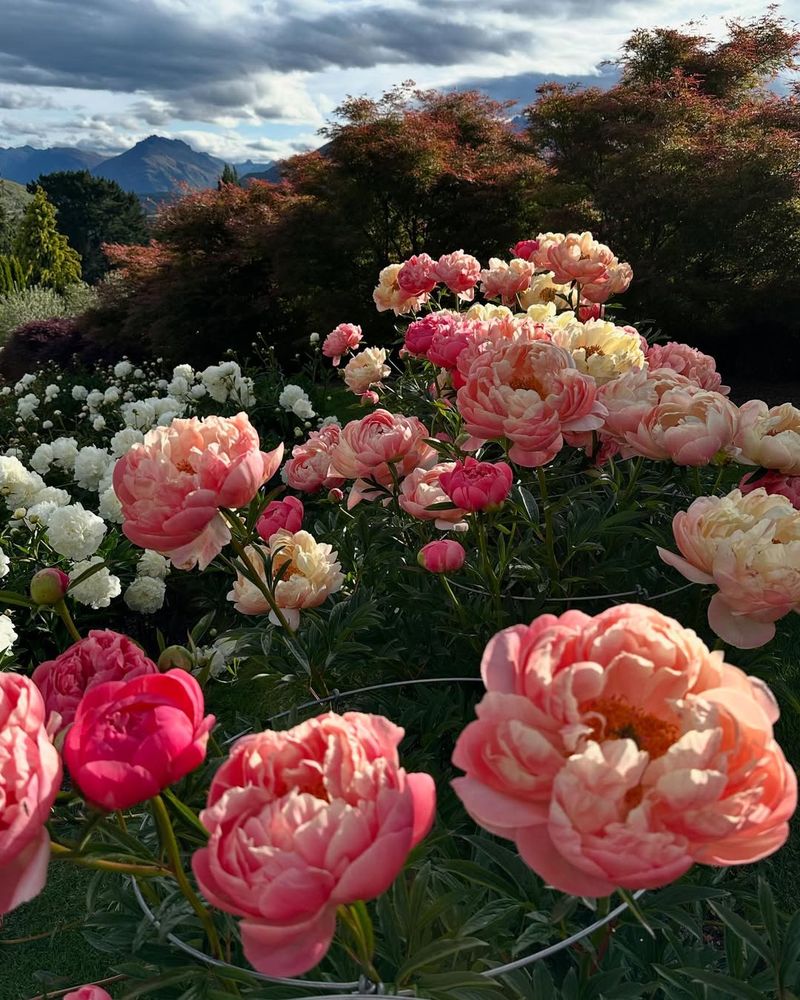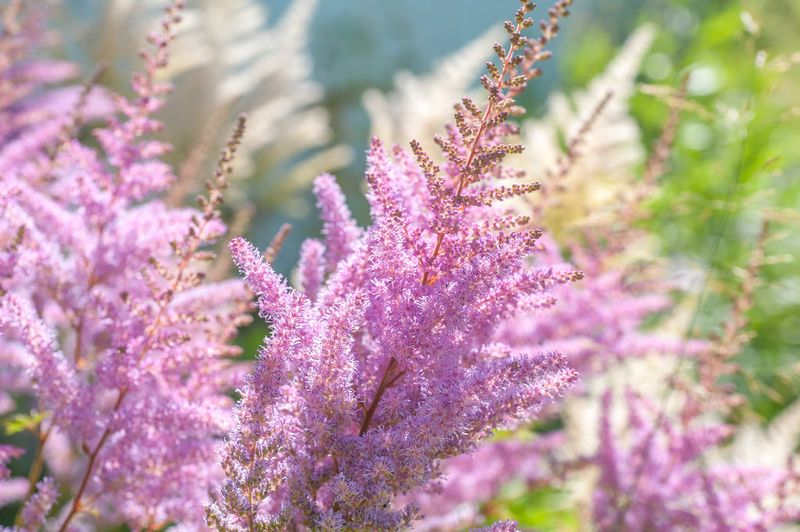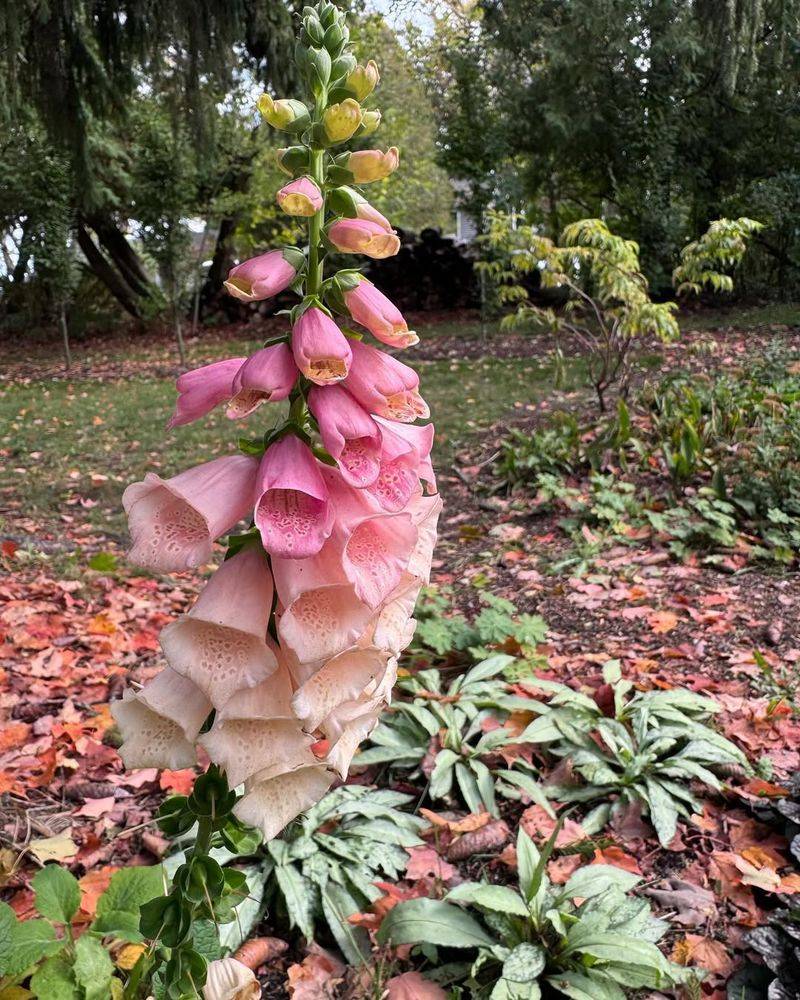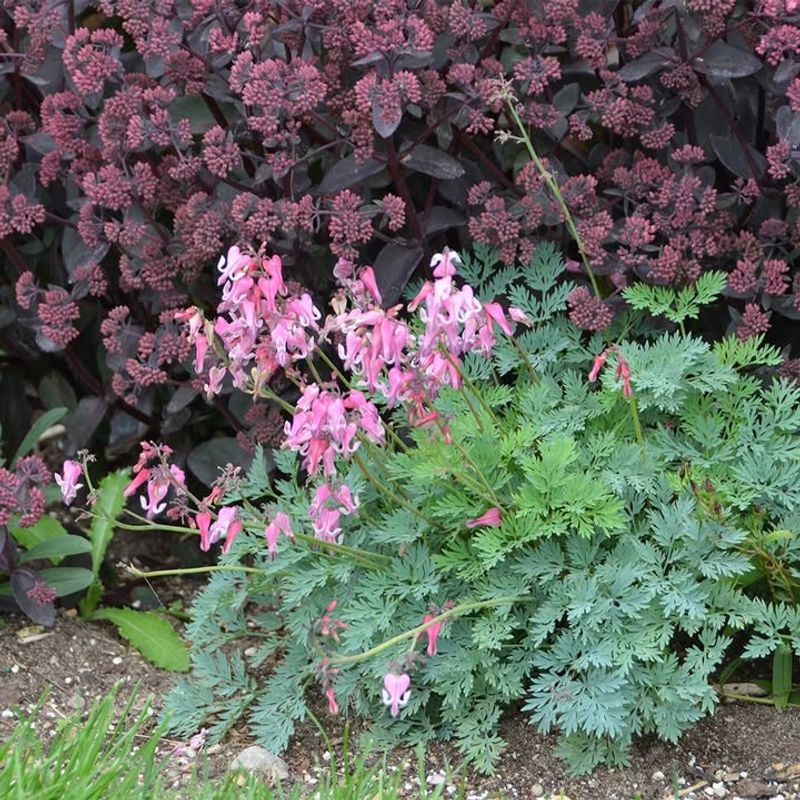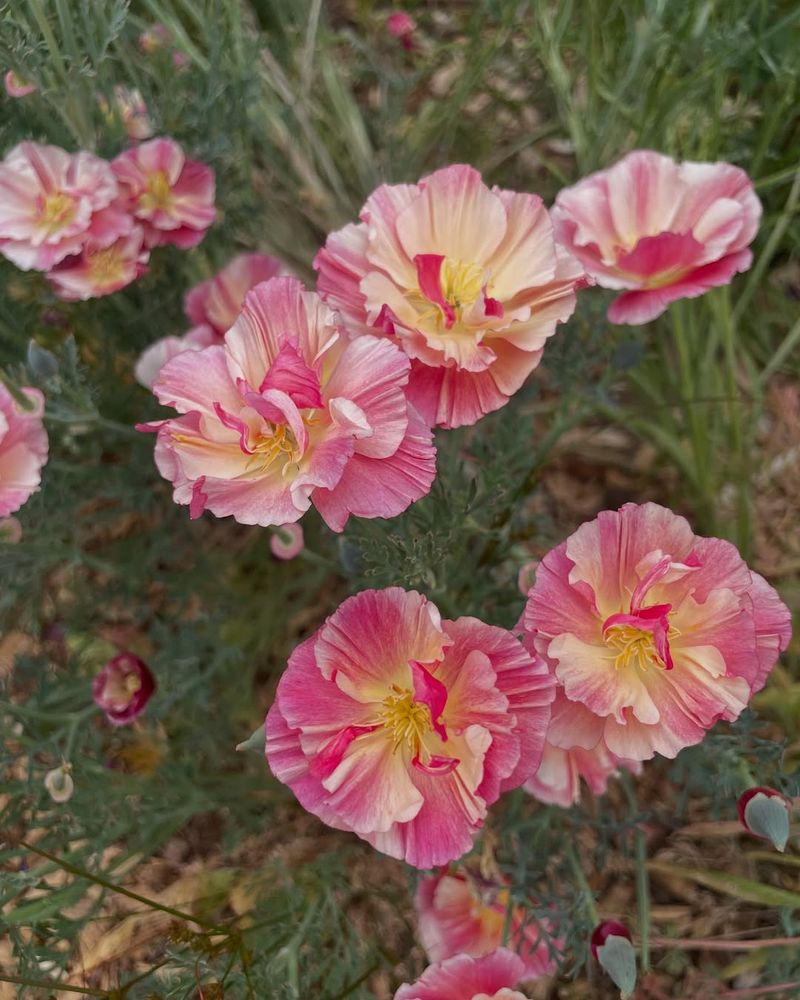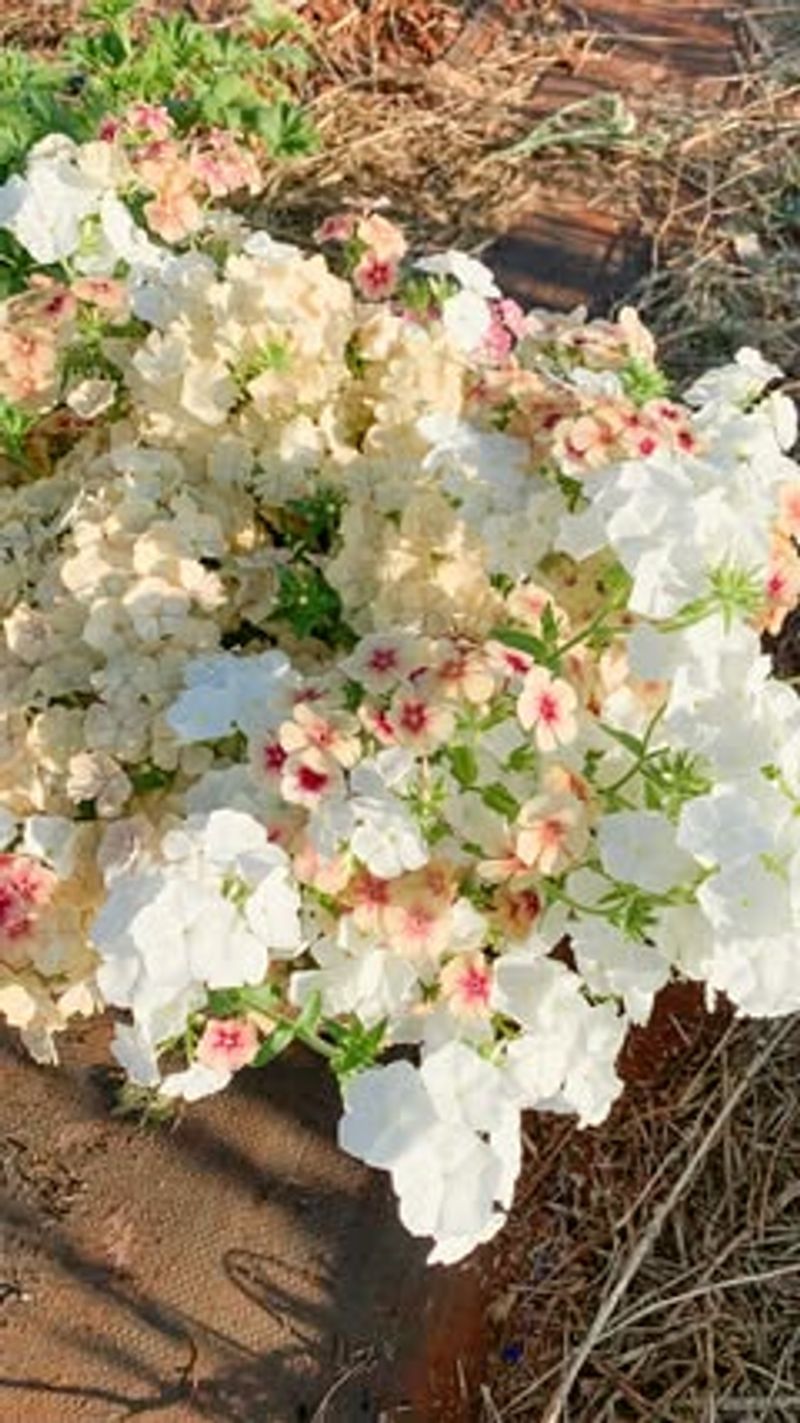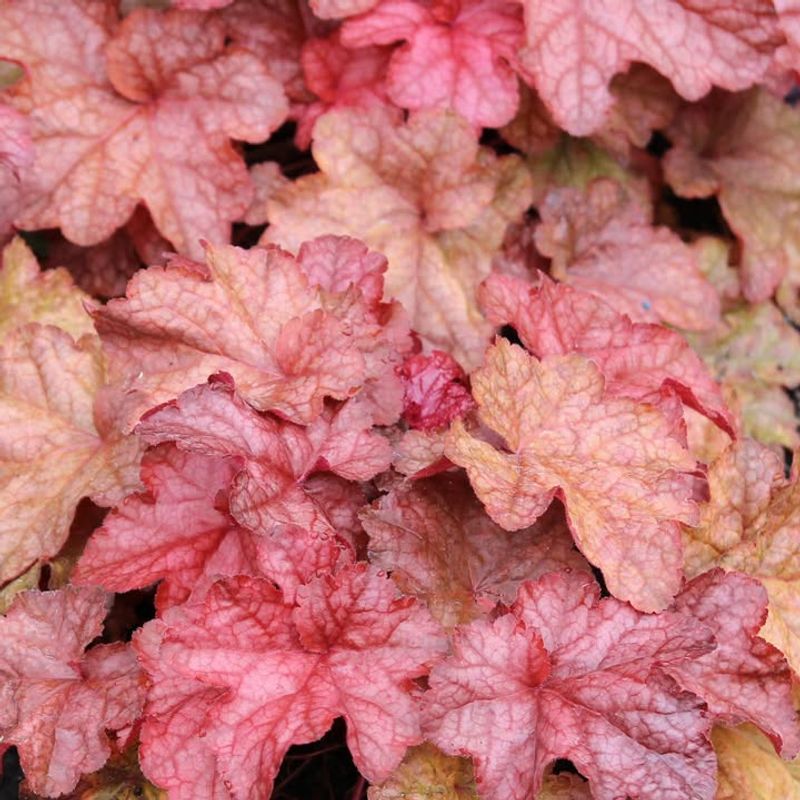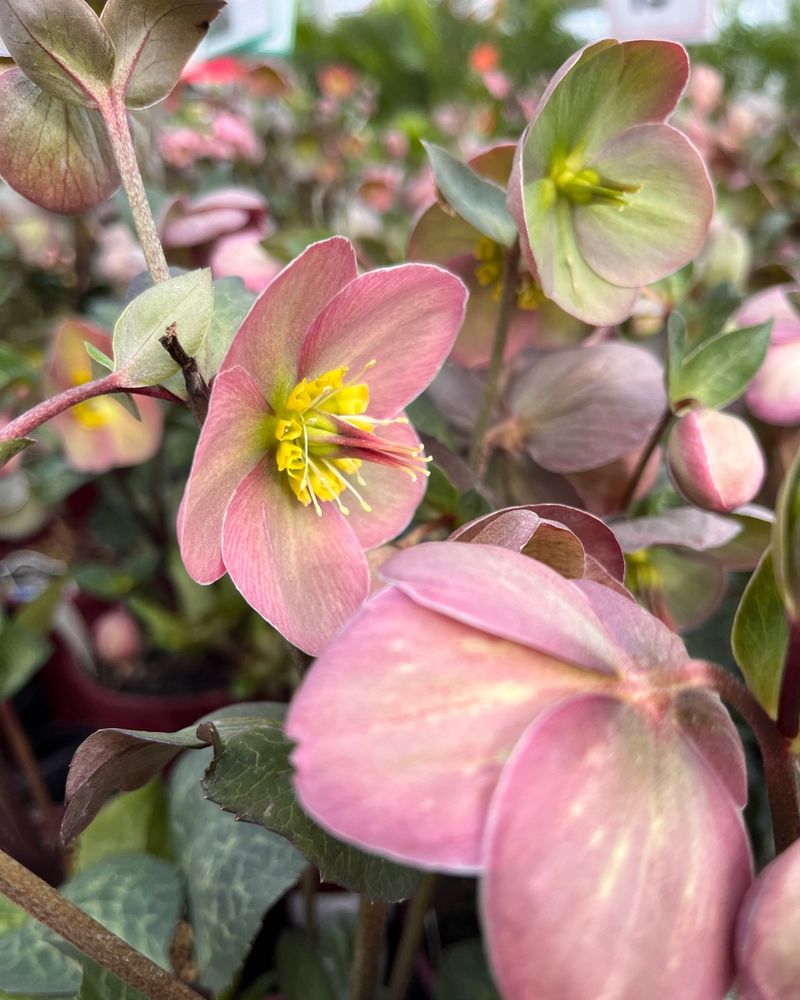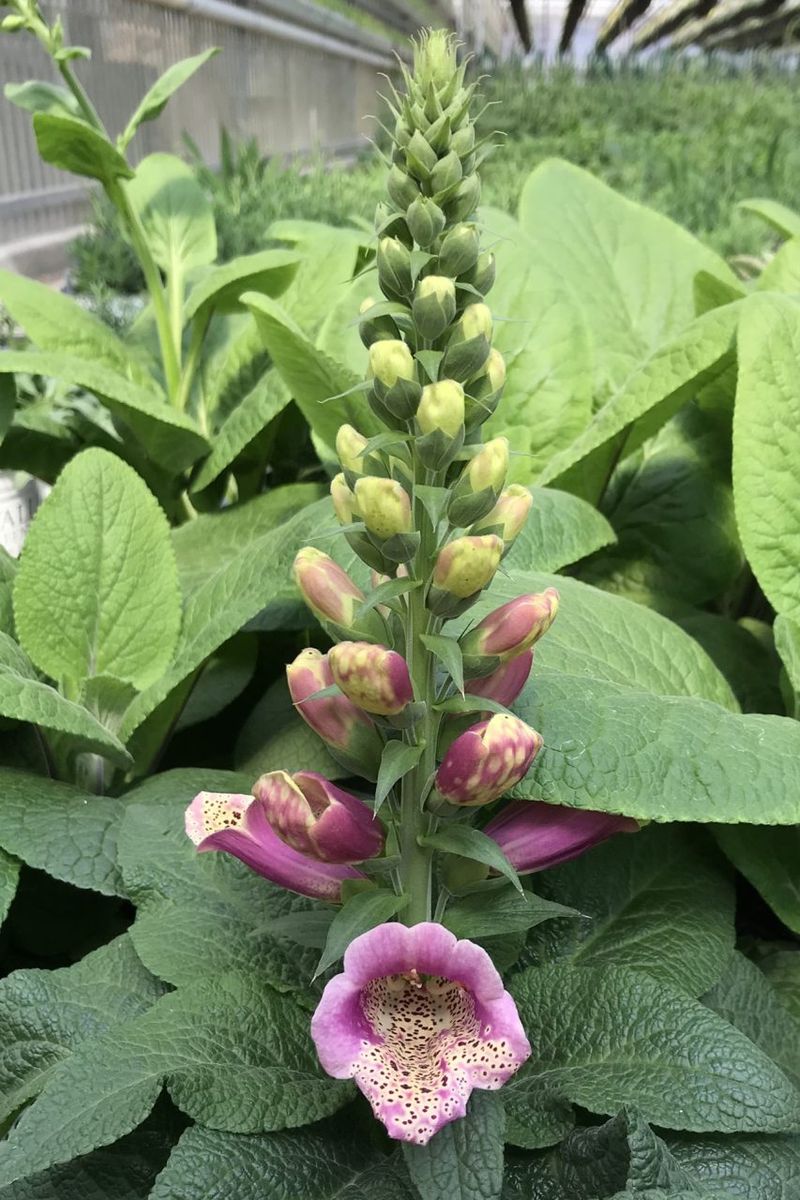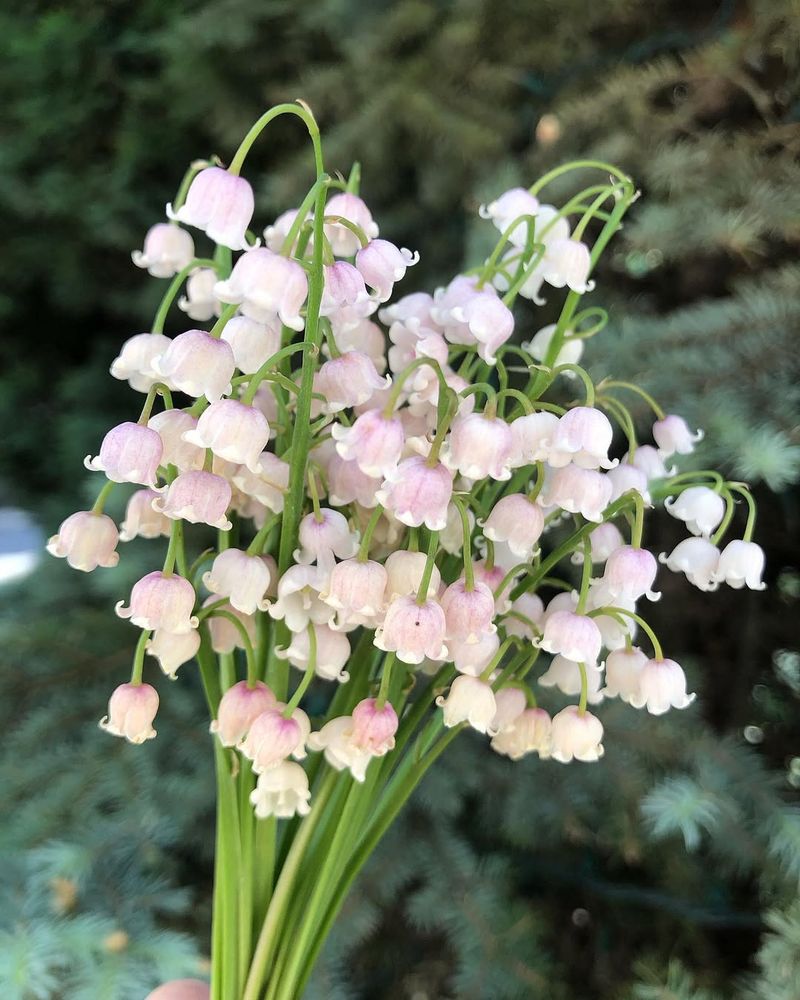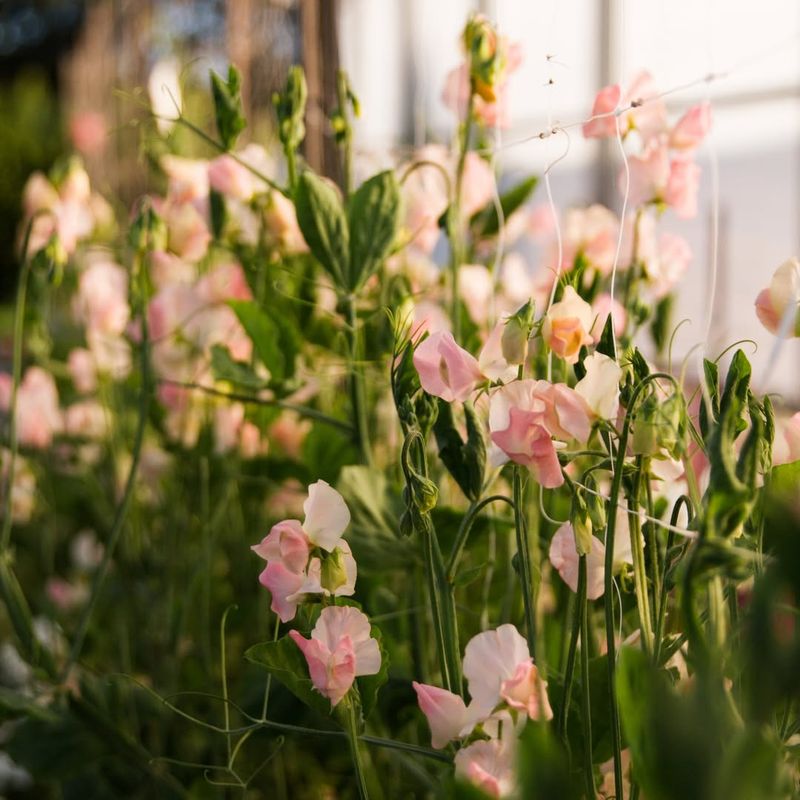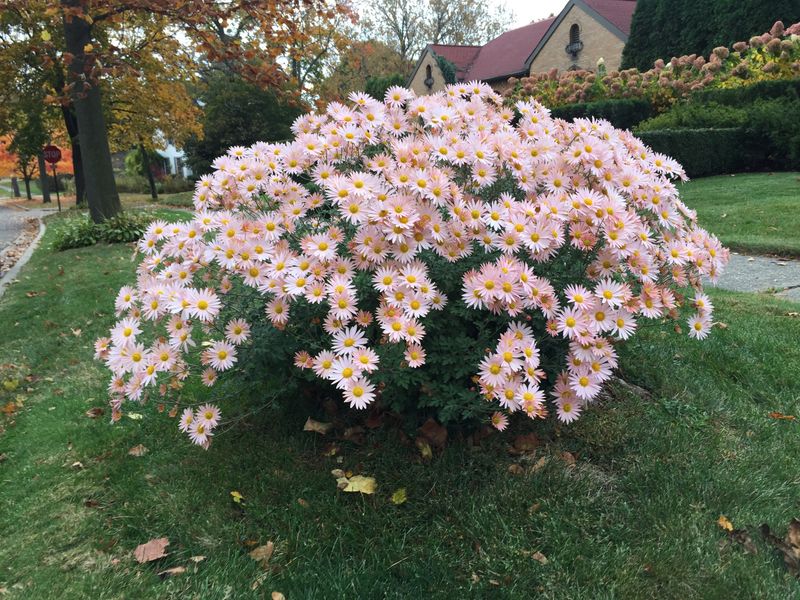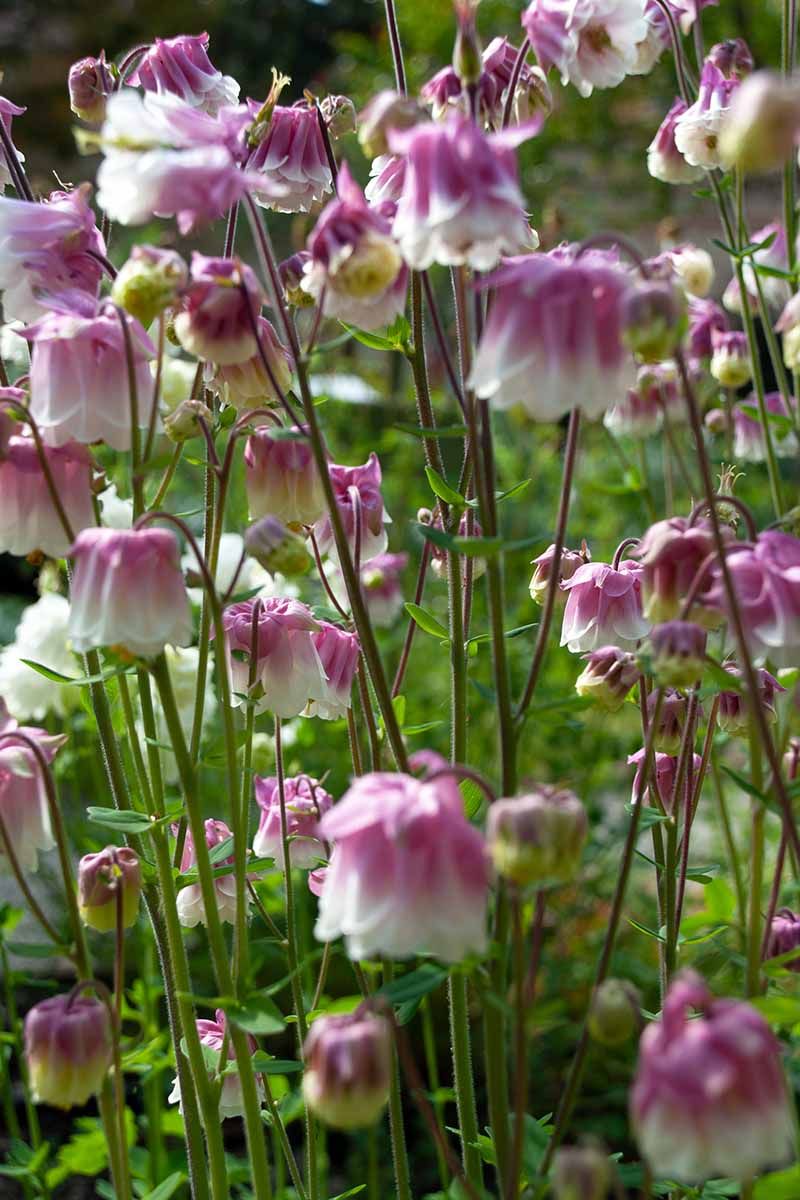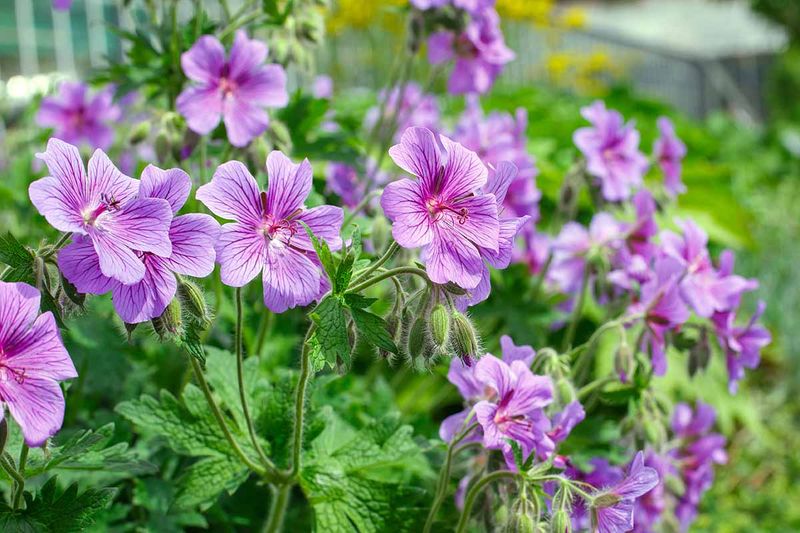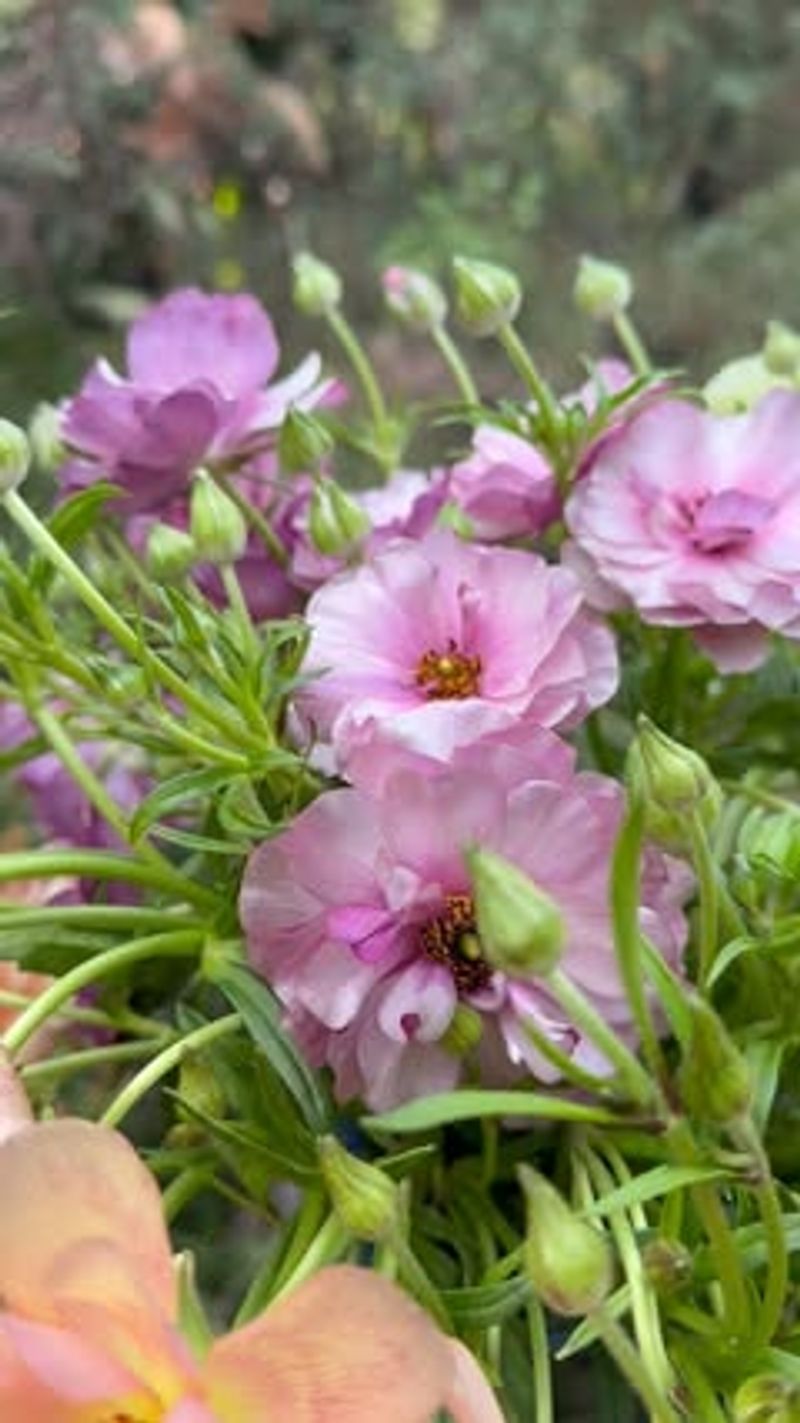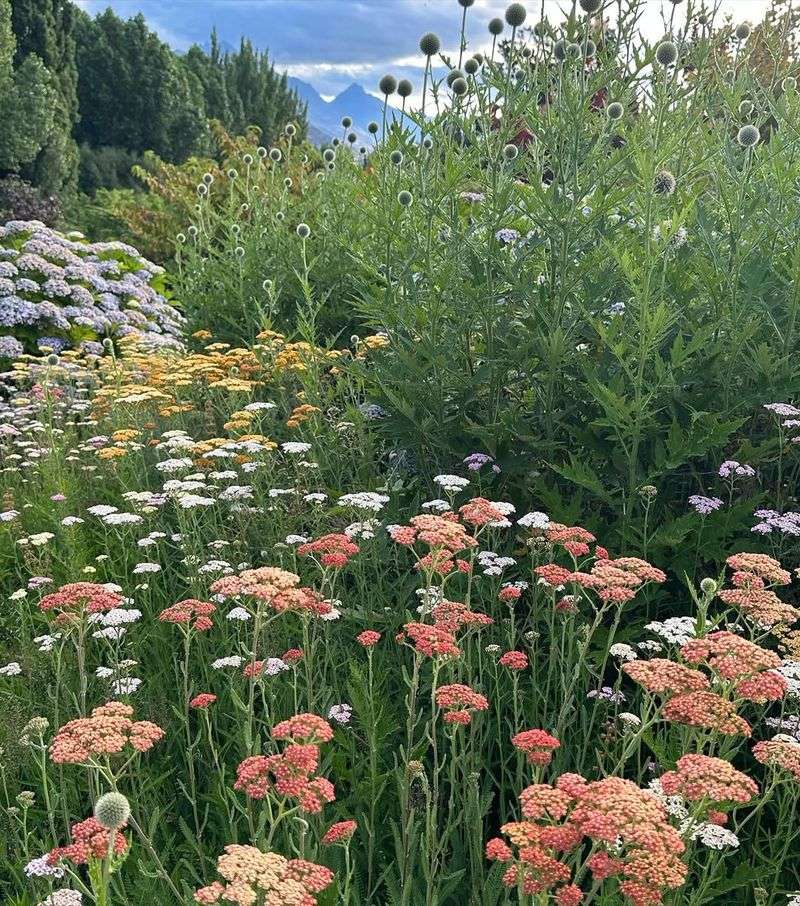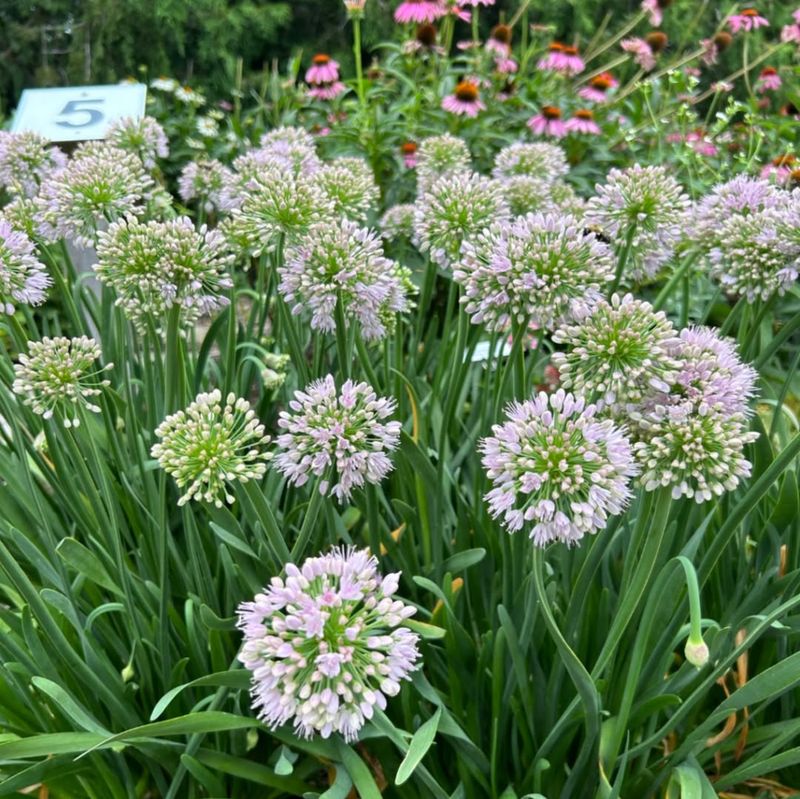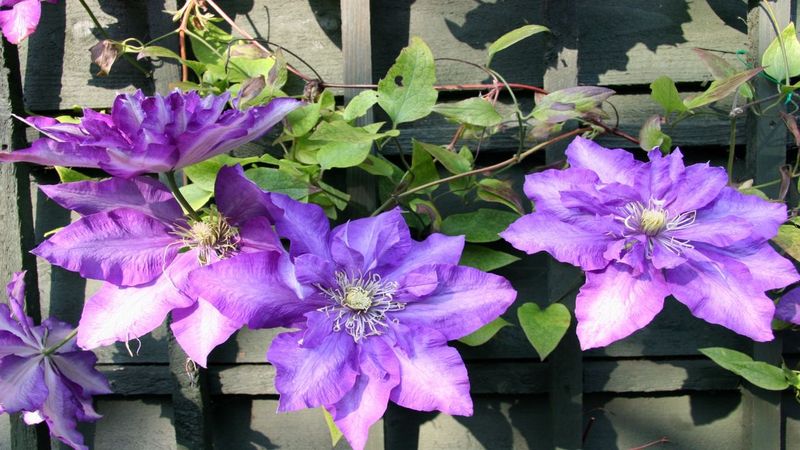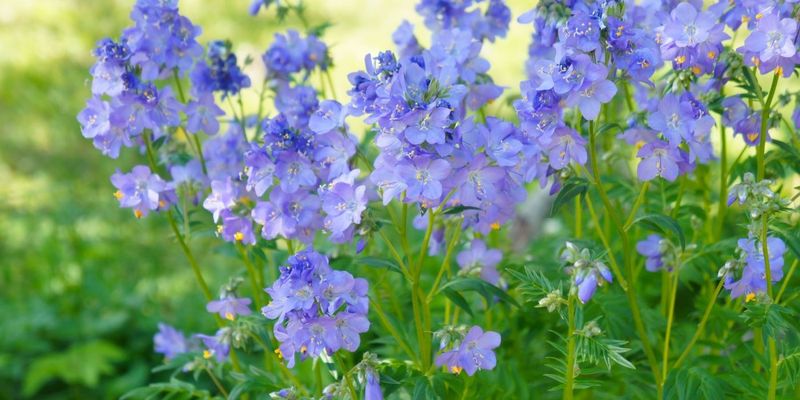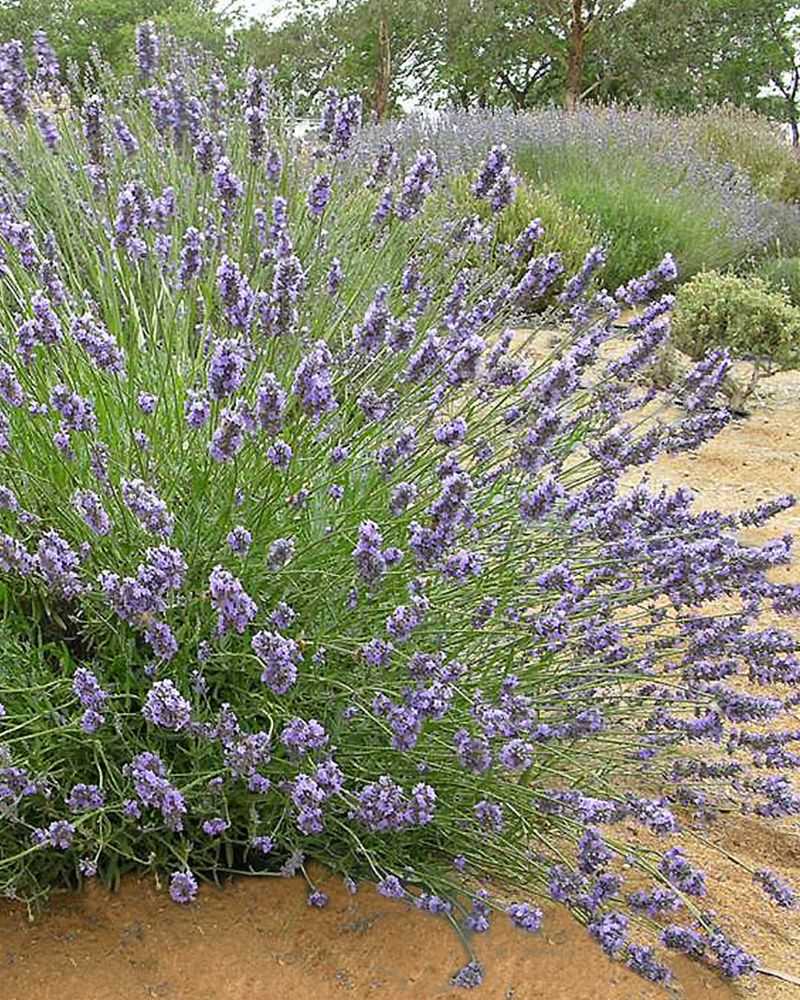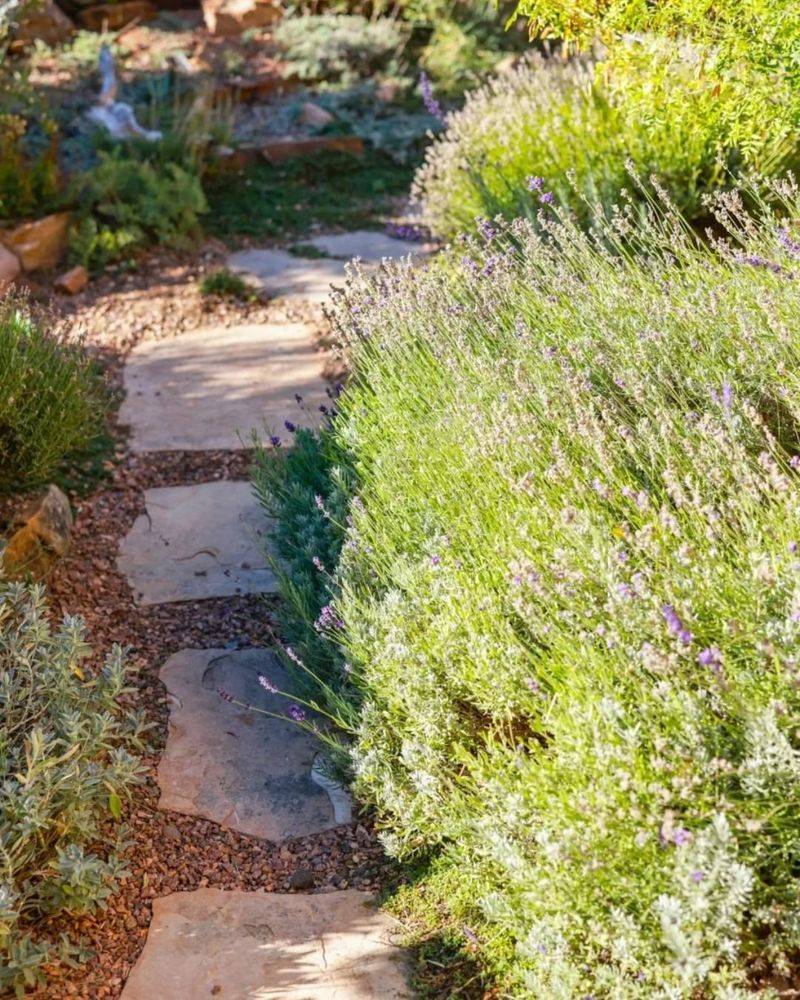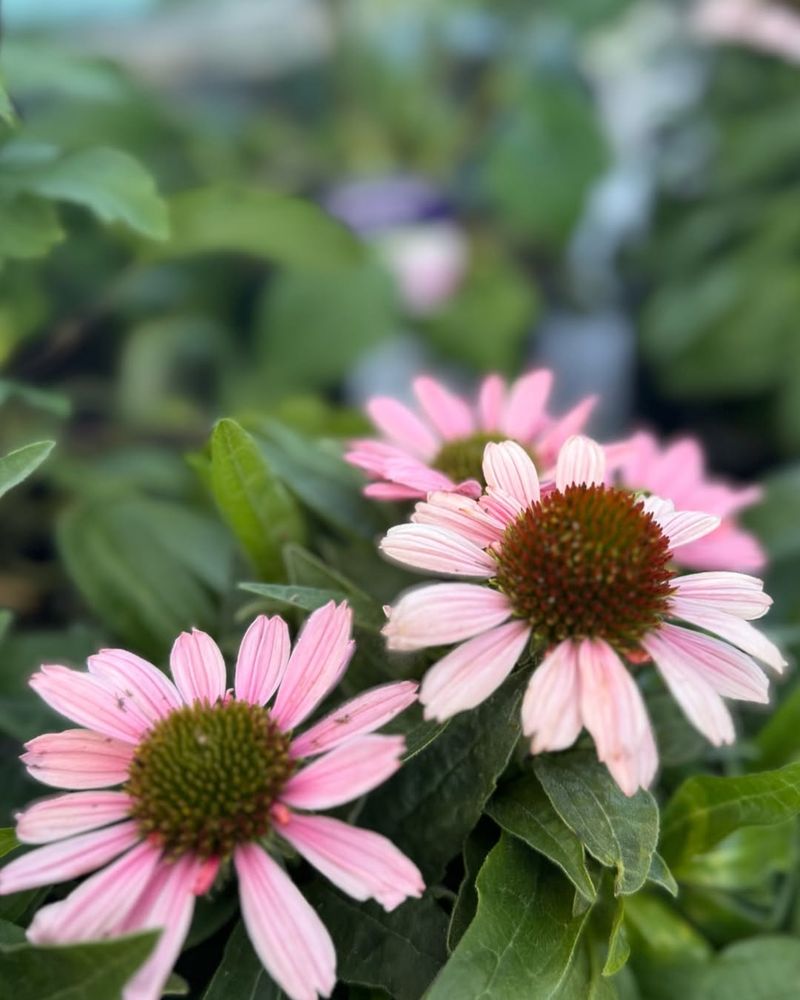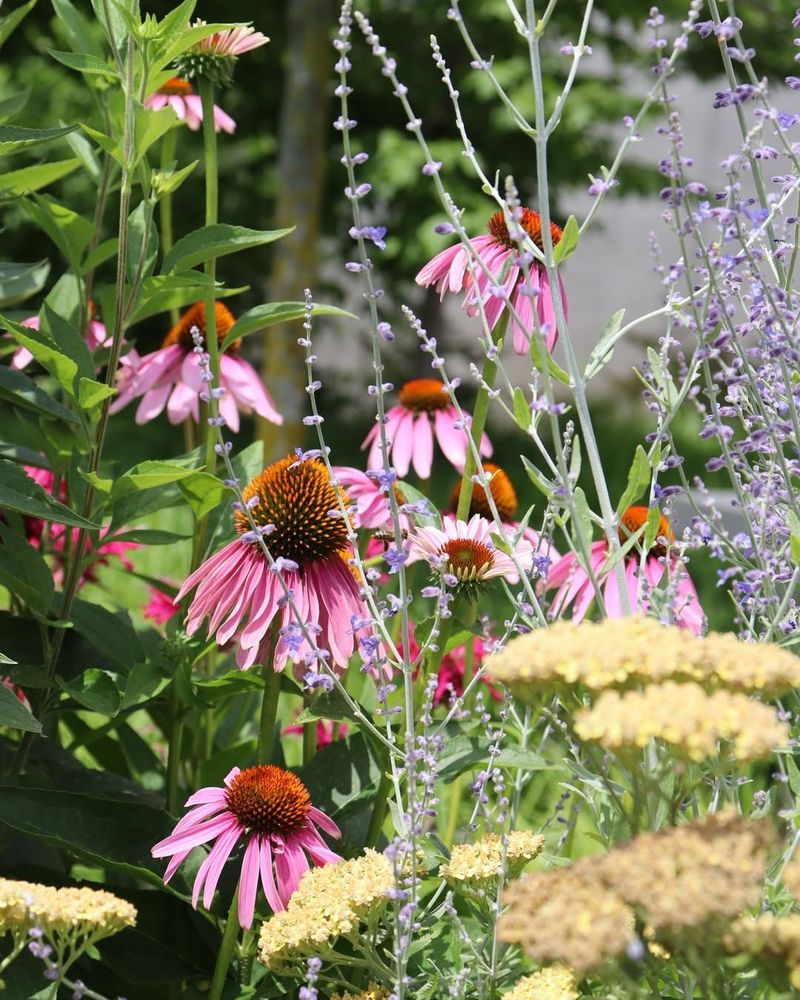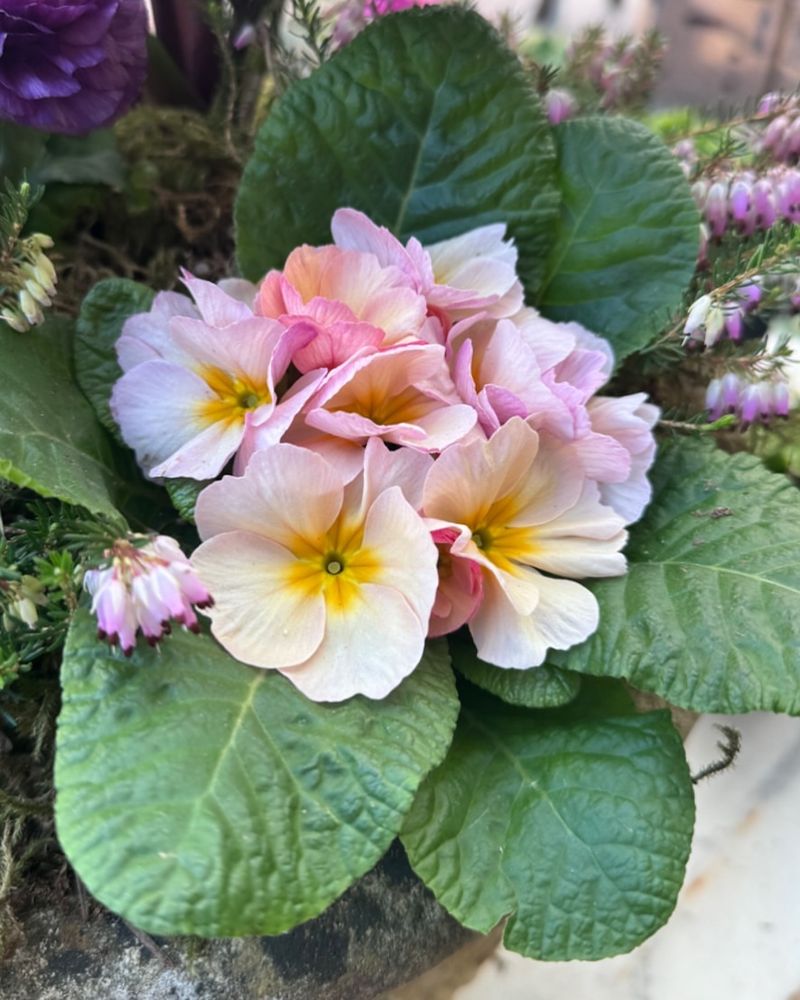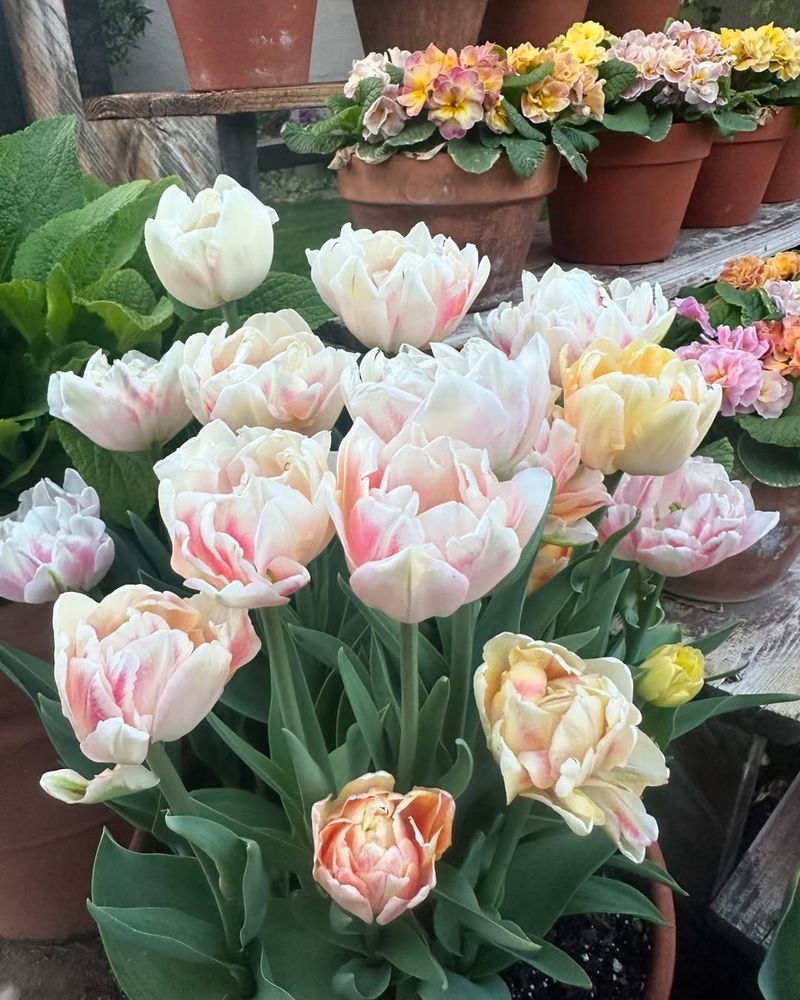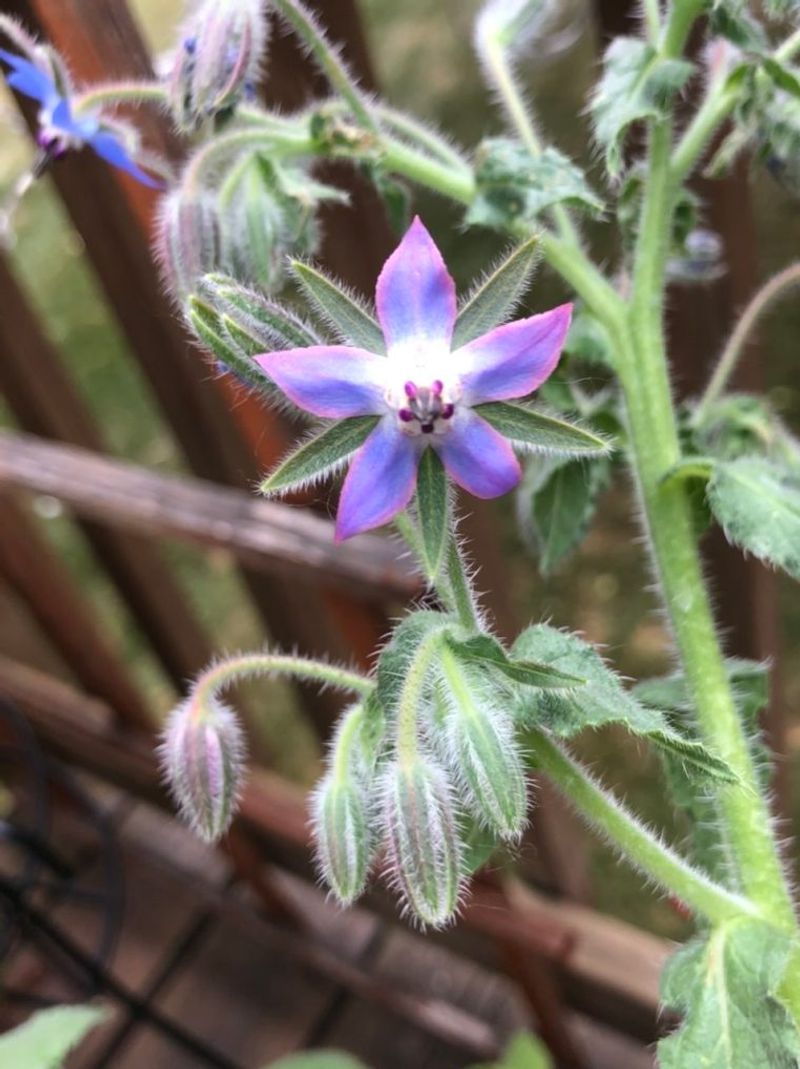Imagine wandering through a garden that feels like stepping into a dreamy painting. Soft pastel perennials invite you to experience tranquility and whimsy all at once. These gentle blooms transform ordinary spaces into a serene retreat, perfect for anyone yearning for a touch of nostalgia and romance in their garden. Let’s explore the enchanting world of these pastel beauties, each bringing its own unique charm and character.
1. Peonies
Peonies are beloved for their large, showy blooms in shades of pink, lavender, and soft white. They thrive in well-drained, slightly acidic soil and require full sun to part shade for the best flower production. Once established, they are quite hardy and can live for decades with minimal care.
Plant peonies where they will not be disturbed, as they dislike being moved. They need a cold winter dormancy period to bloom to their full potential, so ensure they have a chill season.
These beautiful blooms are perfect for cutting and creating fresh flower arrangements or adding a touch of elegance to any room. Peonies also pair well with other cottage garden flowers like foxglove and delphinium.
2. Astilbe
Astilbe is a perennial that produces feathery, plume-like flowers in shades of pink, lavender, or white. It thrives in moist, well-drained soil and prefers partial to full shade, making it a great choice for woodland gardens or shady spots.
Astilbe needs regular watering to keep the soil consistently moist, as it doesn’t tolerate drought well. Adding organic mulch around the base can help retain moisture and keep the roots cool.
Its vibrant blooms attract pollinators like bees and butterflies, making it a wonderful addition to any garden. Astilbe also works beautifully in shaded containers or as a filler plant in flower beds.
3. Delphinium
Delphinium, known for its towering spikes of blue, purple, and pastel blooms, brings dramatic color to any garden. It thrives in well-drained soil and prefers full sun to partial shade. Make sure the soil is rich in nutrients for the best flowering results.
Delphiniums require consistent watering, especially during dry periods, but be careful not to let the soil become waterlogged. Regular staking is necessary to support the tall stems as they can become top-heavy.
These tall beauties are ideal for the back of flower beds or as focal points in cottage gardens. Their flowers also make for stunning cut arrangements, adding height and color to indoor vases.
4. Foxglove
Foxglove is a striking biennial or short-lived perennial with tall spikes of tubular flowers in pastel pinks, purples, and whites. It thrives in well-drained, fertile soil and prefers part shade to full sun, making it great for woodland or shaded garden areas.
Foxglove is relatively low-maintenance but does need regular watering during dry spells. It also benefits from a light mulch to keep its roots cool.
These plants add a touch of elegance and vertical interest to your garden. They also attract hummingbirds and bees, making them a great addition to any pollinator-friendly garden.
5. Bleeding Heart
Bleeding heart is a unique perennial that boasts delicate, heart-shaped flowers in soft pink, white, and lavender tones. It thrives in well-drained, humus-rich soil and prefers part shade, especially during the hot summer months.
This plant needs regular watering to keep the soil moist, as it is sensitive to dry conditions. Bleeding heart is best placed in a sheltered spot to protect it from strong winds that may damage its delicate stems.
Its graceful blooms are perfect for creating a dreamy, romantic atmosphere in garden beds. They also make lovely cut flowers for vases, adding a touch of charm to any room.
6. Dianthus
Dianthus, or “pinks,” is a hardy perennial with fragrant, small flowers in shades of pink, red, and soft white. It thrives in well-drained soil and loves full sun, making it ideal for borders, containers, or rock gardens.
Dianthus needs minimal water once established, but occasional watering during hot weather will help encourage continuous blooms. Pruning spent flowers can extend the blooming period.
These low-growing plants make beautiful ground cover and attract pollinators such as bees and butterflies. They also make great additions to herb gardens, where they can be mixed with other fragrant herbs.
7. Japanese Anemone
Japanese anemones are elegant perennials that produce delicate, white, pink, or lavender flowers with golden centers. They thrive in rich, well-drained soil and prefer part sun to part shade.
They are fairly easy to grow and require little maintenance once established, though they do benefit from occasional watering during dry spells. Pruning back spent blooms will encourage new growth.
These plants are great for adding a soft, romantic touch to garden borders or as a woodland filler. Their flowers also make excellent cut flowers, lasting well in arrangements for indoor décor.
8. Phlox
Phlox is a versatile perennial known for its colorful blooms in shades of pink, purple, and white. It thrives in rich, well-drained soil and prefers full sun to partial shade for the best flowering results.
Regular watering is essential to keep the soil moist, especially during the blooming period. Phlox also benefits from deadheading to encourage further blooms and maintain its tidy appearance.
These plants are perfect for adding bright color to garden borders or flower beds. They also attract butterflies, making them a great choice for pollinator-friendly gardens.
9. Coral Bells
Coral Bells are known for their striking foliage, which comes in shades of red, purple, and silver, along with delicate bell-shaped flowers in pastel hues. They prefer part to full shade and thrive in moist, well-drained soil.
Coral Bells are relatively low-maintenance but benefit from regular watering to keep the soil consistently moist. In areas with heavy winter snow, a light layer of mulch can help protect the roots.
These plants work beautifully as ground cover or edging along pathways, adding both color and texture. They also make great additions to containers or hanging baskets, where their trailing stems can be appreciated.
10. Hellebores
Hellebores, or “Lenten roses,” are early-blooming perennials that produce elegant flowers in shades of white, pink, and lavender. They thrive in rich, well-drained soil and do well in part to full shade, making them ideal for woodland or shady gardens.
They require little care but should be watered regularly, especially during dry spells. Once established, hellebores are quite hardy and can withstand colder temperatures.
These plants are great for adding early-season color to your garden, as they bloom in late winter to early spring. Hellebores also make stunning cut flowers and work well in shaded garden beds.
11. Canterbury Bells
Canterbury Bells are charming, tall perennials that produce bell-shaped flowers in pastel shades of pink, purple, and blue. They thrive in well-drained soil and prefer full sun to part shade for the best flowering.
These plants need consistent watering, especially in dry weather, but they should not be overwatered. Regular deadheading will encourage more blooms throughout the season.
Perfect for adding vertical interest to your garden, Canterbury Bells also work well as a background plant for lower-growing flowers. Their blooms make beautiful cut flowers for indoor arrangements.
12. Veronicastrum
Veronicastrum, also known as “Culver’s Root,” is a tall perennial with spiky clusters of white or pale lavender flowers. It thrives in well-drained, moist soil and requires full sun to bloom profusely.
This plant needs regular watering to keep the soil moist but does not tolerate waterlogged conditions. It also benefits from occasional staking to support its tall, slender stems.
Veronicastrum adds dramatic height to flower beds and is perfect for the back of borders. Its elegant flowers also attract butterflies and bees, making it a great choice for pollinator gardens.
13. Lily of the Valley
Lily of the Valley is a fragrant, shade-loving perennial known for its delicate, bell-shaped white flowers. It thrives in moist, well-drained soil and does best in part to full shade.
It’s an easy-to-grow plant that requires minimal care, though it should be kept watered during dry spells. Once established, it will naturalize and spread over time.
This plant is perfect for creating a fragrant ground cover in shaded areas or woodland gardens. The flowers also make lovely cuttings for indoor arrangements, filling your home with a sweet, gentle scent.
14. Sweet William
Sweet William is a clumping perennial that produces clusters of colorful, fragrant flowers in shades of pink, purple, and white. It thrives in full sun and well-drained soil, making it an excellent choice for cottage gardens.
These plants need moderate watering, especially during the blooming season, and benefit from regular deadheading to prolong flowering. They can also tolerate light drought once established.
Sweet William’s vibrant blooms are perfect for garden borders or as a cut flower in bouquets. Their sweet scent also attracts bees and butterflies, adding a lovely touch to your pollinator-friendly garden.
15. Shasta Daisy
Shasta Daisies are classic perennials with bright, cheerful white flowers and golden centers. They thrive in full sun and well-drained soil, making them ideal for sunny garden beds or borders.
These daisies are relatively drought-tolerant once established but benefit from consistent watering during dry spells. Deadheading spent flowers will encourage more blooms throughout the season.
Shasta Daisies add a timeless, crisp look to any garden and are perfect for cutting into fresh floral arrangements. Their simple elegance also complements other pastel-colored flowers in cottage garden designs.
16. Columbine
Columbine is a versatile perennial known for its unique, spurred flowers in shades of pink, purple, yellow, and white. It thrives in well-drained soil and prefers partial shade, especially in hotter climates.
These plants need regular watering to keep the soil moist but not soggy. They can also tolerate a range of soil types, making them easy to grow in various garden settings.
Columbine’s delicate flowers attract hummingbirds and butterflies, making them an excellent addition to a pollinator-friendly garden. Their airy, elegant blooms work beautifully in naturalized settings or woodland gardens.
17. Geranium (Cranesbill)
Cranesbill geraniums are low-growing perennials that produce vibrant flowers in shades of pink, purple, and white. They thrive in well-drained soil and prefer full sun to partial shade.
Geraniums are fairly low-maintenance, requiring only occasional watering once established. They also benefit from regular deadheading to keep the plant looking neat and encourage further blooms.
These perennials make excellent ground cover or edging plants for garden beds, adding color and texture. They also work well in containers and hanging baskets, where their trailing stems can be appreciated.
18. Evening Primrose
Evening Primrose is known for its bright, yellow, and sometimes pale pink flowers that bloom in the evening. It thrives in full sun and well-drained, slightly sandy soil, making it an excellent choice for drought-prone areas.
These plants need very little water once established and can tolerate dry conditions well. They are perfect for low-maintenance gardeners and can be easily grown in containers or garden beds.
The flowers open in the evening, making them perfect for a twilight garden. They also attract night pollinators like moths, adding a unique charm to your garden at night.
19. Yarrow
Yarrow is a hardy perennial that produces flat-topped clusters of small flowers in shades of pink, yellow, and white. It thrives in well-drained soil and prefers full sun, making it perfect for xeriscaping and cottage gardens.
Yarrow is drought-tolerant once established and requires very little maintenance. It should be watered deeply but infrequently, as it doesn’t like sitting in soggy soil.
This plant is excellent for creating a naturalized look in flower beds or meadows. Its flowers also make great cuttings for dried floral arrangements, adding a rustic touch to your home.
20. Chives (Flowering)
Flowering chives are a perennial herb that produces round, purple blooms on tall, slender stems. They thrive in well-drained, fertile soil and prefer full sun, making them perfect for herb gardens or borders.
Chives need regular watering but are quite drought-tolerant once established. They can also tolerate a variety of soil types, as long as it’s well-drained.
These plants add a pop of color to herb gardens and are easy to grow in containers. Their flowers are also edible and can be used as a garnish in salads or savory dishes.
21. Clematis
Clematis is a vine that produces large, showy flowers in shades of pink, purple, white, and lavender. It thrives in well-drained soil and prefers full sun to partial shade, making it ideal for trellises and fences.
Clematis benefits from regular watering, especially during the growing season, but it doesn’t like to have wet feet. Providing support for its climbing vines is key to encouraging healthy growth.
This plant is perfect for adding vertical interest to your garden, whether it’s climbing over a fence, trellis, or arbor. Clematis flowers also make stunning cut flowers for indoor vases.
22. Jacob’s Ladder
Jacob’s Ladder is a perennial with feathery, fern-like foliage and clusters of blue or lavender flowers. It thrives in well-drained, moist soil and prefers part to full shade.
This plant is relatively low-maintenance and requires only regular watering to keep the soil moist. It also benefits from light mulching to keep the roots cool during hot summer months.
Jacob’s Ladder works beautifully in woodland gardens or shaded flower beds. Its delicate flowers attract pollinators like bees and butterflies, making it a great addition to any pollinator-friendly garden.
23. Lavender Cotton
Lavender Cotton, or Santolina, is a compact, aromatic shrub with silvery-gray foliage and yellow or lavender flower clusters. It thrives in well-drained soil and loves full sun, making it an excellent choice for rock gardens or borders.
These plants are drought-tolerant once established and require minimal water. They benefit from light pruning after flowering to maintain their neat, rounded shape.
Lavender Cotton adds a soft, silvery touch to garden beds and works well as a low hedge or border plant. Its foliage also makes it a great choice for creating fragrant, textured arrangements.
24. Lavender-Scented Sage
Lavender-Scented Sage is a fragrant perennial that features spikes of purple flowers and aromatic, grayish-green leaves. It thrives in well-drained, sandy soil and prefers full sun for optimal growth.
This plant is drought-tolerant once established, needing only occasional watering during dry spells. It also benefits from being pruned back after flowering to encourage fresh growth.
Its soothing fragrance makes it a perfect addition to herb gardens or sensory gardens. Lavender-Scented Sage also attracts pollinators, making it a valuable plant for any wildlife-friendly garden.
25. Coneflower (Echinacea)
Coneflower is a hardy perennial known for its large, daisy-like flowers in shades of purple, pink, and white. It thrives in well-drained soil and loves full sun, making it ideal for garden beds or meadows.
Once established, it is drought-tolerant and requires minimal care, though it benefits from regular watering during dry spells. Deadheading spent flowers encourages new blooms and keeps the plant looking tidy.
This plant is a favorite among pollinators like bees and butterflies, making it a great addition to pollinator-friendly gardens. Its flowers are also excellent for cutting and drying, perfect for rustic floral arrangements.
26. Russian Sage
Russian Sage is a woody perennial with airy, silver-gray foliage and spikes of small lavender-blue flowers. It thrives in well-drained soil and full sun, making it perfect for hot, dry spots in the garden.
This plant is very drought-tolerant and requires little water once established. It also needs minimal maintenance and benefits from a light pruning in early spring to encourage fresh growth.
Russian Sage adds texture and color to garden borders and works well as a backdrop for shorter plants. Its fragrant foliage also acts as a natural pest repellent in the garden.
27. Ice Plant
Ice Plant is a low-growing, succulent perennial that produces vibrant flowers in pink, purple, and white. It thrives in well-drained, sandy soil and loves full sun, making it perfect for rock gardens or xeriscaping.
This plant is incredibly drought-tolerant, requiring little water once established. It spreads quickly, making it an excellent ground cover for sunny, dry spots in the garden.
The bright, jewel-like flowers of the Ice Plant create a stunning display in late spring to early summer. Its succulent foliage also adds interesting texture to your garden, making it a great addition to dry, hot climates.
28. Primroses
Primroses are early-blooming perennials that come in a variety of pastel shades, including pink, purple, yellow, and white. They thrive in moist, well-drained soil and prefer part to full shade, making them ideal for woodland gardens or shaded borders.
These plants need regular watering, especially during dry spells, to keep the soil consistently moist. Adding a layer of mulch around the base will help retain moisture and protect the roots during winter.
Primroses are perfect for brightening up shady spots and adding early-season color to your garden. Their cheerful flowers also make great additions to springtime floral arrangements.
29. Borage
Borage is an herbaceous perennial that produces clusters of star-shaped, bright blue flowers. It thrives in well-drained soil and full sun, making it an excellent choice for herb gardens or flower beds.
Borage is easy to grow and requires minimal care, needing only occasional watering during dry periods. It also helps to improve soil health by attracting pollinators and enriching the soil with nutrients.
The flowers of Borage are not only beautiful but also edible, adding a fresh, cucumber-like flavor to salads or cocktails. This plant is also a great companion for other vegetables, as it repels certain pests and enhances the growth of nearby plants.


